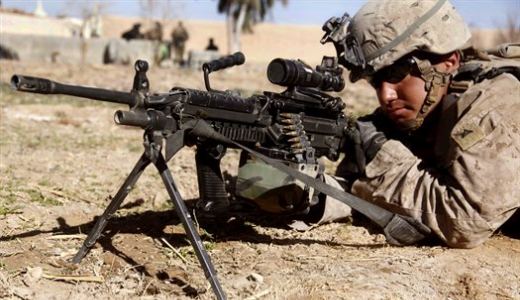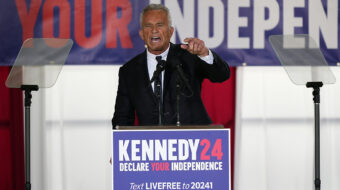
In his State of the Union speech, President Obama articulated a soaring vision of a United States claiming world leadership in fields vital to humanity in the 21st century: biomedical research, information technology and especially, clean energy technology. A million electric cars, vehicles powered by sunlight and water, high speed rail spanning the country, solving the hardest problems in clean energy …
The president emphasized the urgency of creating more jobs, improving public education and modernizing the country’s infrastructure.
And then he turned to the national debt: the “legacy of deficit spending that began almost a decade ago.” That debt now stands at over $14 trillion, and the Congressional Budget Office predicts it will rise $1.5 trillion this year.
Acknowledging that his proposed cuts come mostly from annual domestic spending that’s just one-eighth of the total budget, the president projected freezing that spending for five years.
Obama was careful to add, “We need to make sure that we’re not doing it on the backs of our most vulnerable citizens.” But as both population and costs grow, it is hard to see how both a freeze, and the projected new investments in innovation, could take place without irreparable harm to just those “most vulnerable citizens.” And Republicans are calling for far deeper cuts.
Meanwhile, 15 million workers remain unemployed and almost 85 million have had their hours or pay cut.
There is another path, one that could not only make a major dent in the national debt, but would also save many lives and put our country on the road to a new international policy of cooperation and mutual problem solving.
That path is to make major cuts in military spending.
The president moved in that direction when he referred to “$10s of billions” in cuts agreed to by the Secretary of Defense. To do more, of course, would mean overcoming immense opposition from Republicans and the military establishment. But it could mean the difference for saving urgently needed domestic programs.
The New Priorities Campaign, points out that the current U.S. military budget of more than $700 billion per year, amounts to 43 percent of global military spending. The Campaign notes that the wars in Iraq and Afghanistan have so far cost over $1 trillion in borrowed money – to say nothing of the thousands of U.S. and NATO soldiers, and the hundreds of thousands of Iraqis and Afghanis, killed and injured.
“Our nation needs foreign and defense policies that serve the authentic needs of maintaining our security in a world where the use of force should be the last resort, not the first response,” the Campaign says in its Declaration of Principles.
Such an approach could help greatly to turn around the ever-climbing federal debt and eliminate the need to freeze social programs while the need for them continues to grow.
The impact of a federal freeze will be felt at all levels – states, counties, cities and towns.
The Center on Budget and Policy Priorities, says that because revenues are down due to the financial crisis, at least 46 states and the District of Colombia have cut state services in areas including health care, services to the elderly and disabled, and higher education, while at the same time more families are facing economic difficulties.
California is struggling to overcome a $25 billion plus budget gap. In New Jersey the gap is $10.5 billion, in Illinois it’s $15 billion and in Texas, $13.4 billion.
California’s new Democratic Governor, Jerry Brown, is proposing a budget with more than $12 billion in cuts, including devastating slashes to the state’s Medicaid program, welfare-to-work, developmental services and higher education.
In a blog post on www.nbcbayarea.com, San Jose State University Political Science professor Larry Gerston noted that in the current fiscal year, California received nearly $70 billion in federal grants-in-aid for various programs, not including the one-time assistance from the economic stimulus. State matching funds amount to 5 to 50 percent of these programs including public education, law enforcement, Medicaid, water resource programs, transportation projects and agricultural subsidies meaning the federal government is funding the larger share of these programs.
Of course the problems in California, as in other states, have many roots. But surely a freeze on federal domestic spending, or worse still, turning the domestic spending clock back to 2006 or earlier as the Republicans envision, would greatly worsen an already gravely difficult situation.
Taking a new path toward a national security based on the economic development, education, health and general wellbeing of people at home and around the world won’t be easy. It will take powerful movements that oppose the extreme right and the military-industrial complex, as well as support for President Obama’s moves toward a broader concept of security. It can be done.
Photo: Courtesy of the Department of Defense.

MOST POPULAR TODAY


Zionist organizations leading campaign to stop ceasefire resolutions in D.C. area

High Court essentially bans demonstrations, freedom of assembly in Deep South

Afghanistan’s socialist years: The promising future killed off by U.S. imperialism

Communist Karol Cariola elected president of Chile’s legislature






Comments